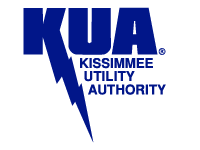Substation Technician - KUA
 General Definition of Work
General Definition of Work
This is skilled trade work responsible for operation, inspection, testing, repair, troubleshooting, replacement, and maintenance of electrical substations and associated systems and equipment. Responsible for inspecting, testing and repairing a large variety of electronic, electrical, electro-mechanical, pneumatic, and hydraulic equipment in the substations. Performs related work as required. Work is performed under regular supervision. Supervision and training is exercised over apprentices and contractors as assigned.
Typical Tasks
Utilize and interpret electrical prints, switching diagrams, technical manuals, maintenance and test procedures, and test results. Typical tasks will include but not be limited to Complete HV and LV switching activities. The use and care of tools and equipment commonly used to construct and maintain electrical substations. Clean and maintain equipment, tools, and vehicles. Maintain stock inventory of substation materials. Inspects, tests, troubleshoots, repairs and maintains substation electrical equipment, including but not limited to Air, Oil, Vacuum and Gas circuit breakers, LTC’s, MOAB’s, PT’s/CCVTs, ABTS’s, capacitor banks, high voltage switchgear, high pressure Pnuematic and Hydraulic Control systems and Power, current, pole mount and pad mount transformers. Inspects and tests equipment to detect malfunctioning and verify operating efficiency and accuracy according to specifications and cumulative station operating records. Tests insulators and bushings of equipment. Tests oil in circuit breakers, transformers, and other equipment. Replenishes and treats oil in circuit breakers and transformers. Compiles test results and performs equipment performance evaluation. Tests and inspects motors, generators, switches, motor control centers, lighting and motor operated valves. Lubricates motors, cleans generators and filters. Cleans, tests and maintains large battery banks and chargers. Adjusts, repairs, rebuilds and replaces malfunctioning electrical equipment, such as breakers, transformers, switches, instrument transformers, ABTS’s, motors, generators and batteries. Repairs control circuitry and switch gear. Maintains preventive and corrective maintenance work logs. Conducts Gas Chromotography tests and replaces SF6 gas as required. Conducts Thermal Imaging scans of substations, transmission and distribution lines and recommends repairs for hot spots. Reads and interprets basic relay data for reports. Splices underground cables and grounding systems. Works in accordance with all safety rules and regulations; use and maintenance of PPE. Attends developmental safety and training opportunities as directed by supervisor. Performs record keeping and computer data entry as necessary. Drives and operates various specialized vehicles required to perform assigned tasks. May pressure wash, paint, repair, and maintain substation buildings. Drives a repair vehicle during normal shift work and when on call. Is subject to 24 hour call out due to equipment malfunction and failures and system emergencies on a rotational basis. Performs related tasks as required.
Knowledge, Skills, and Abilities
Thorough knowledge of fundamentals and principles of electricity and of methods and technology essential to substation work. Thorough Knowledge of methods and technology essential to substation work. Thorough Knowledge of the electric transmission and distribution system of KUA in regards to location of substations, circuits, and substation equipment. Thorough knowledge of maintenance, testing and assembly of transformers, load tap changers, circuit breaker assemblies, disconnect switches and metal-clad switchgear. Thorough knowledge of use and operation of test equipment such as power factor, TTR, Micro-ohm, AC/DC High Voltage Pot, Motion Analyzer, Meggar and multimeter. Thorough knowledge of the repair and maintenance of components of an electrical substation. Thorough knowledge of electrical prints and diagrams. Thorough knowledge of the occupational hazards and necessary safety precautions of the work. Knowledge of heat transfer, thermal dynamics and object properties as it pertains to Thermal Imaging. Skill in the use and care of tools of the trade. Skill in the use of electrical tools and instruments. Skill in the use of computers and MS Office programs. Ability to determine improper operation of substation equipment to take proper remedial action. Ability to make repairs on moderately complex mechanical and electrical equipment. Ability in determining and reacting promptly in solving problems. Ability to follow oral and written directions. Ability to build and maintain positive relationships with co-workers, customers, and the public. Must be able to work in confined spaces and elevated areas. Ability to retain information. Ability to perform physical labor including displacing up to 100 pounds, bending, and other strenuous requirements of the job under adverse weather conditions and electric system disturbances. Ability to work outdoors and in inclement weather, climb ladders and work in elevated and confined spaces.
Education and Experience
High school diploma or GED required. Completion of KUA’s Apprentice Substation Electrician program, equivalent program or minimum of 3 years of experience as substation electrician required. Supplemental technical courses in the repair of electrical utility equipment and considerable experience with the repair and maintenance of electrical utility substation and power plant electrical equipment maintenance desired. Considerable experience with electrical test equipment.
SPECIAL REQUIREMENTS
Possession of a valid appropriate driver's license issued by the State of Florida.
Individuals in this classification are considered essential during emergency and storm situations and must be able to work 16 hours per day for extended periods of time and may be required to be away from their family.
Individuals in this classification must be available to serve on-call and are subject to having to work outside of their assigned shift/schedule to meet operational needs.
Must be able to distinguish between red and green.
 Enter your email address in the
Enter your email address in the 